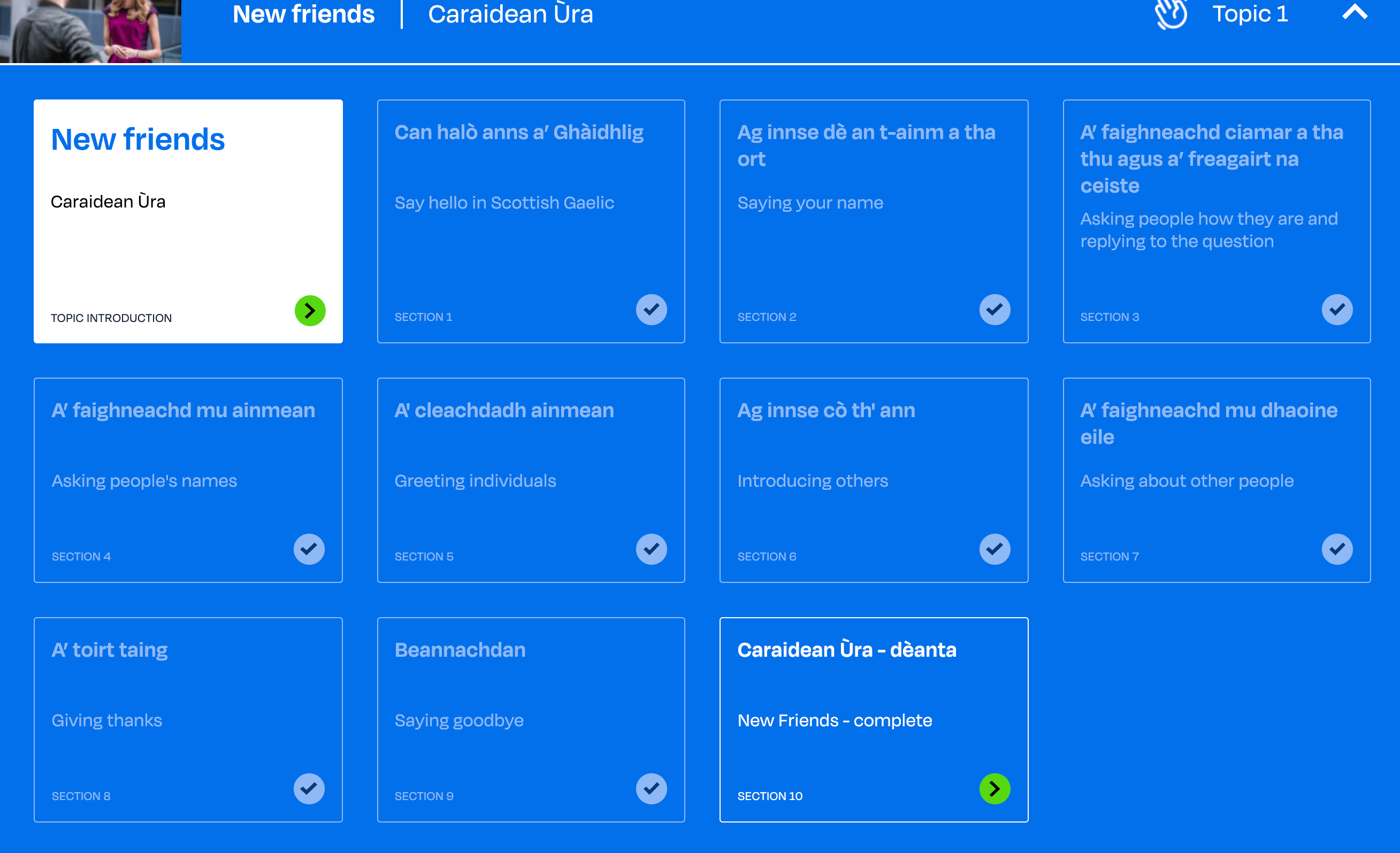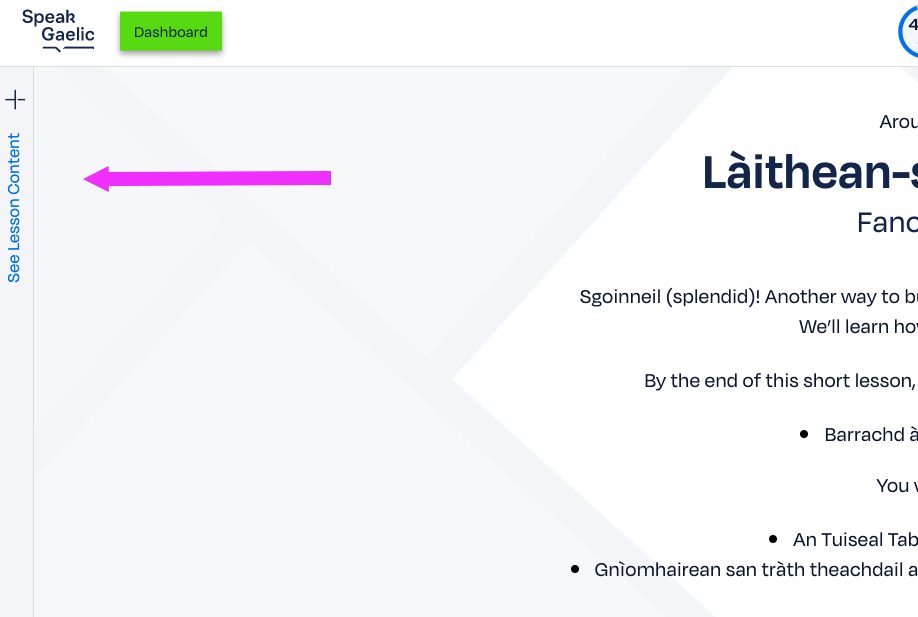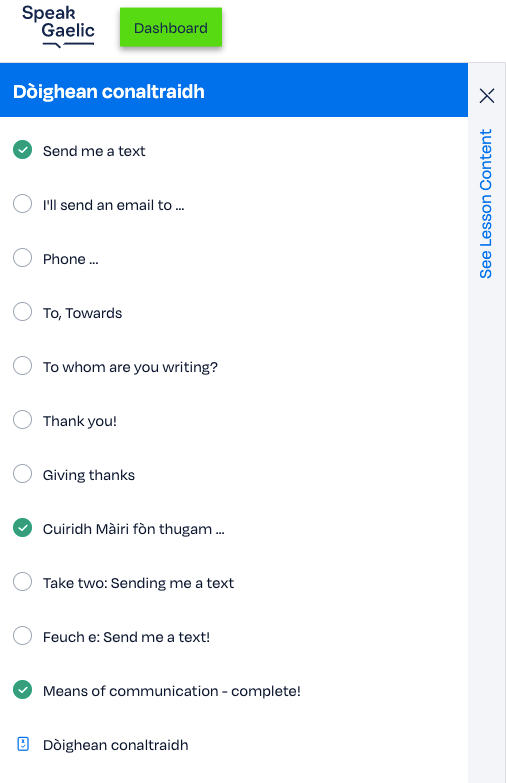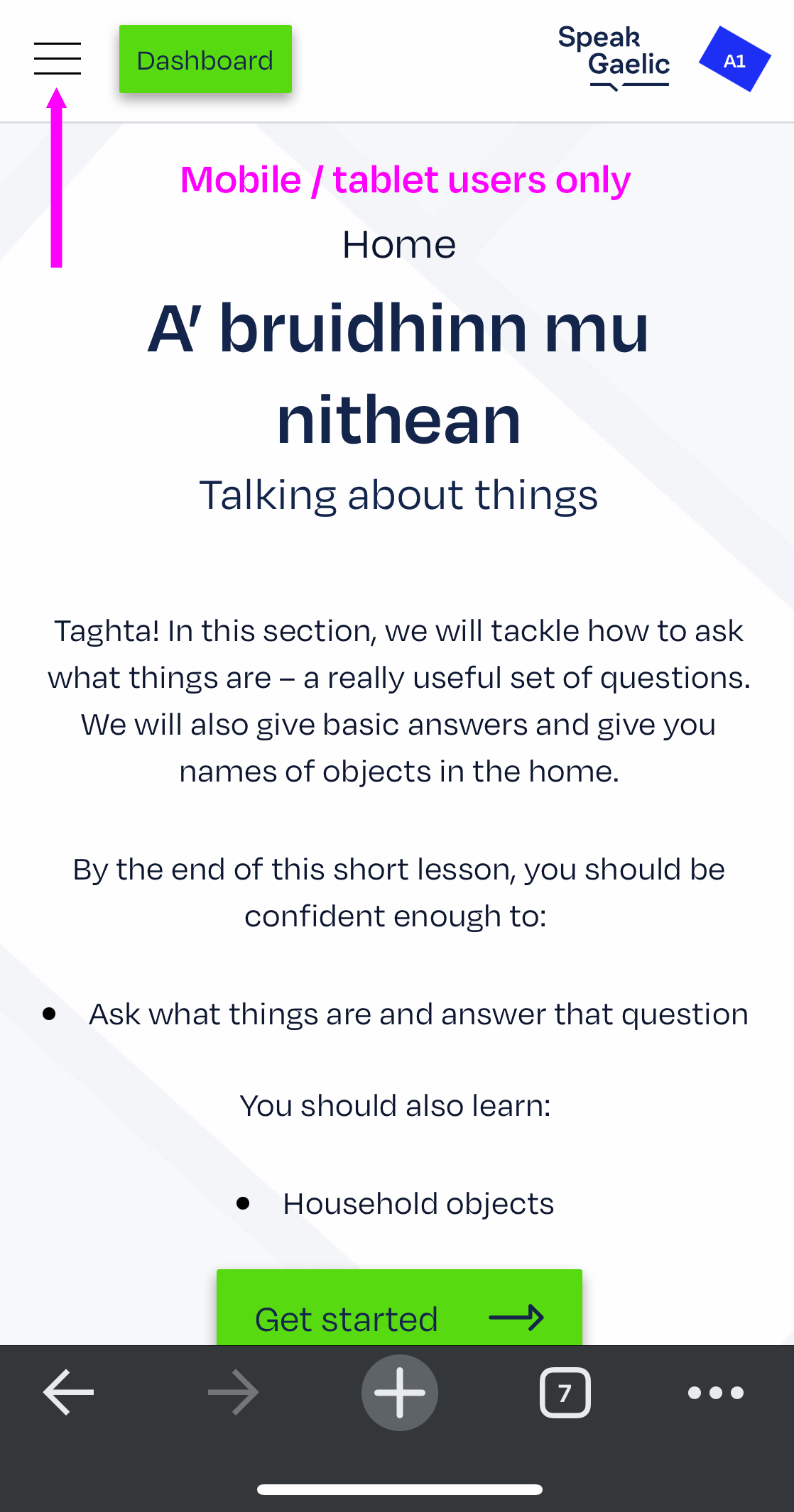Ciamar a cheannaicheas sinn na tiocaidean?
How will we buy the tickets?
‑eas | ‑as
When we want to ask questions such as: ciamar (how), cò (who), dè (what), cuin (when), cia mheud (how many) and càit(e) (where) with the future tense of regular verbs, we use the relative future tense. The verb lenites at the beginning of the word and an ‑as or‑eas ending is added, again following the caol ri caol is leathann ri leathann (slender to slender, broad to broad) rule for vowels in Gaelic. Càit(e) follows its own pattern of using the question (dependent) form of the verb, just as before.
Let’s look at ceannaich (buy) again.
| CHEANNAICHEAS | AN CEANNAICH |
| Ciamar a cheannaicheas? | Càit an ceannaich? |
| Cò cheannaicheas? | |
| Dè cheannaicheas? | |
| Cuin a cheannaicheas? | |
| Cia mheud a cheannaicheas? |
And let’s see some examples from our conversation.
Ciamar a cheannaicheas sinn na tiocaidean?
How will we buy the tickets?
Cuin a choinnicheas sinn riutha?
When will we meet them?
Cuin a choinnicheas sinne, ma-thà?
When will we meet, then?
You’re all set to go. Meet, greet and buy! Have a great time! Before moving on, we hope you’ll enjoy this Gaelic proverb.
Cha b’ e cheannach a rinn e
He inherited it/It’s in his blood (lit. It’s not buying he did)




